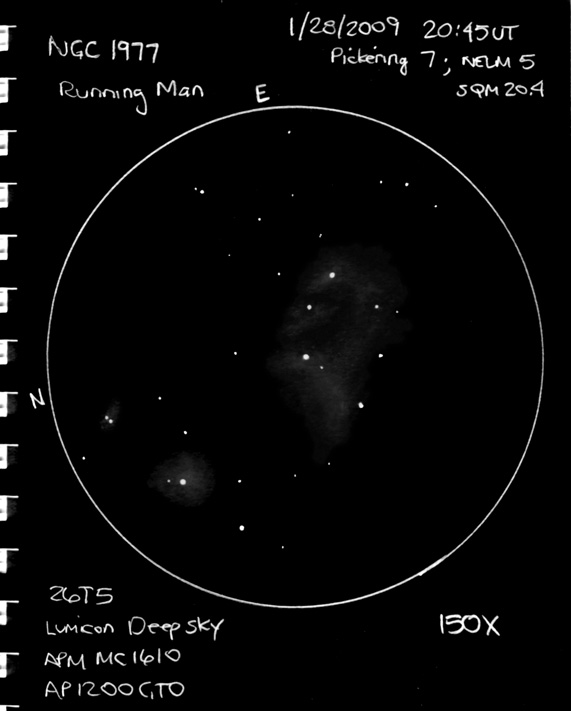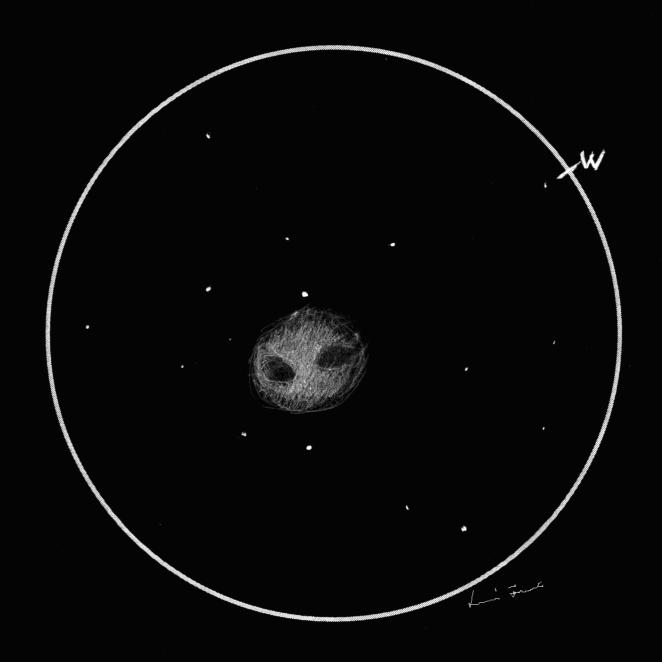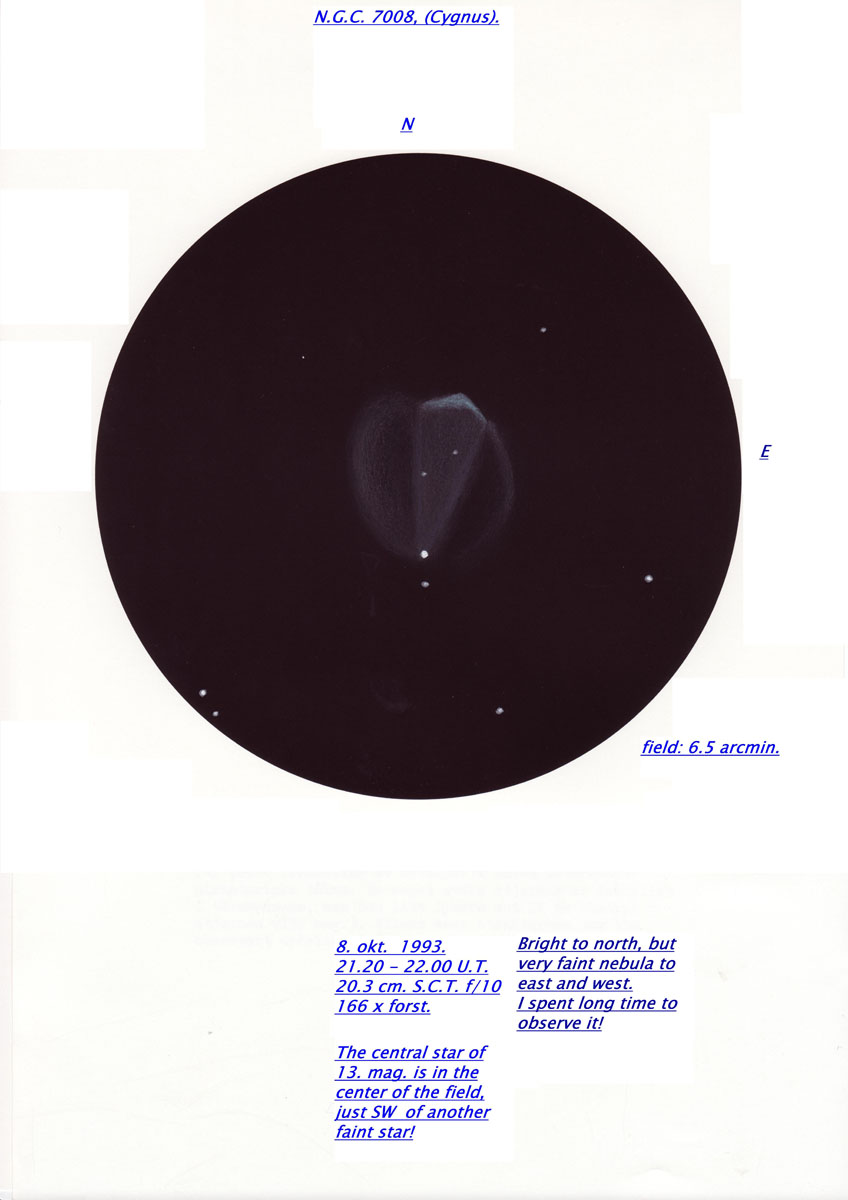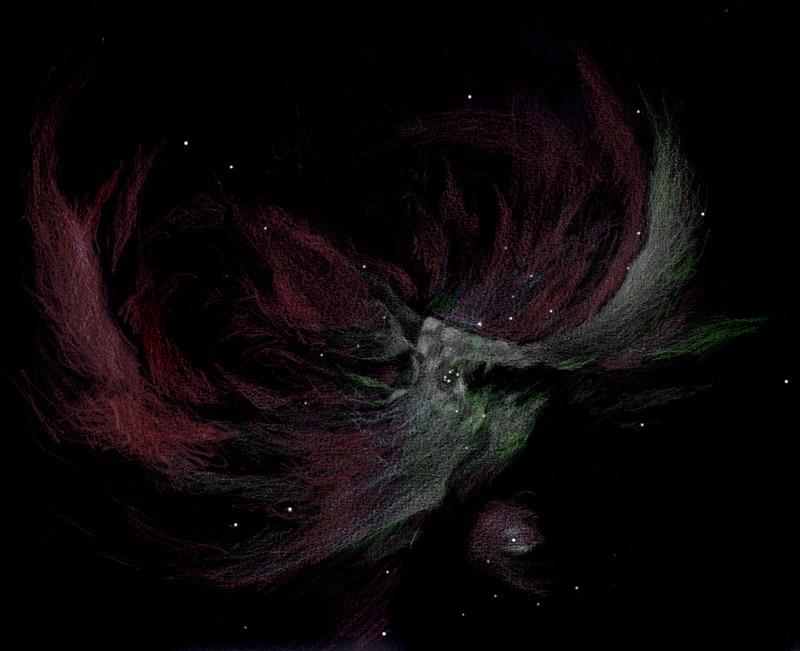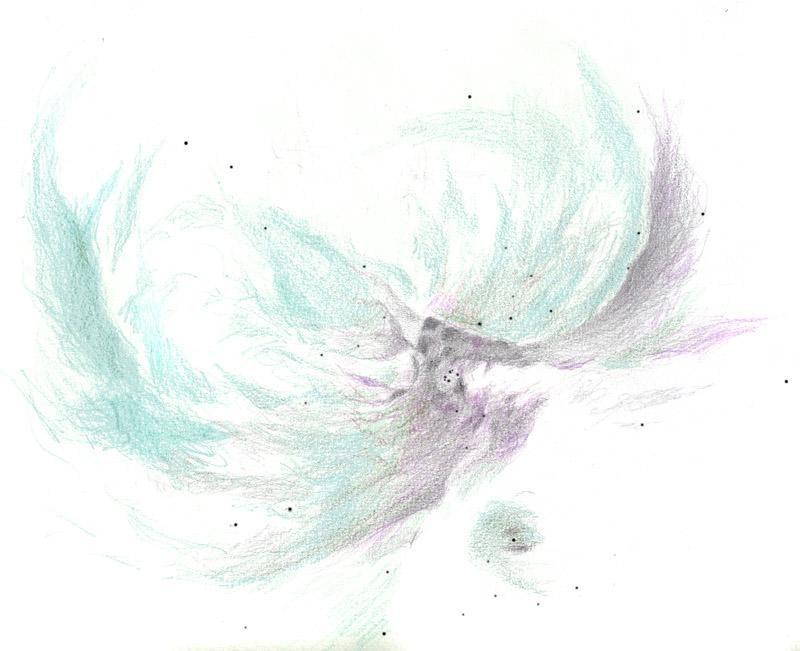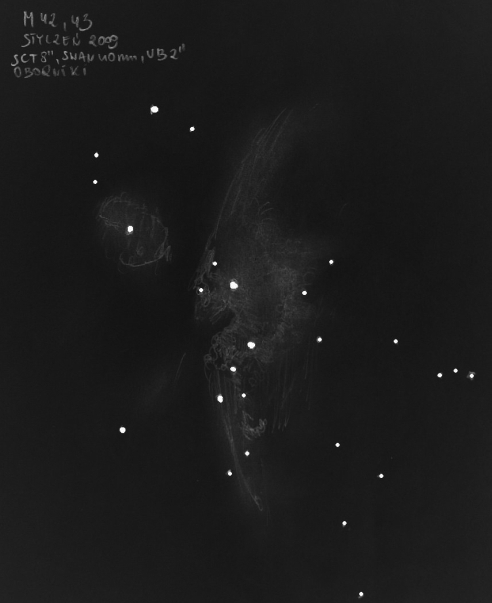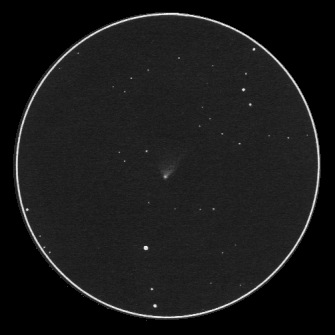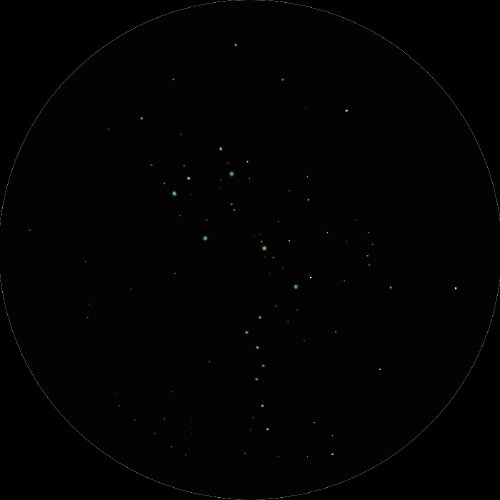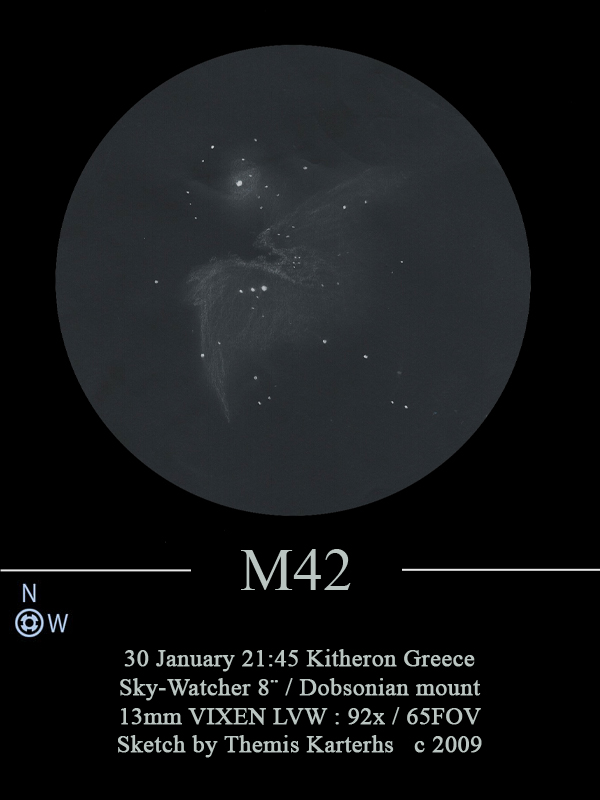
M42, The Great Orion Nebula
Sketch and Details by Themis Karterhs (ΕΥΘΥΜΙΟΣ ΚΑΡΤΕΡΗΣ), text by Rich Handy
Greek amateur astronomer Themis Karterhs’ (ΕΥΘΥΜΙΟΣ ΚΑΡΤΕΡΗΣ) sketch is remarkable for it’s beauty, subtlety and accuracy. This intricate emission nebula is a challenging object for even the seasoned astronomical artist, so seeing it done so well as a first effort is quite wonderful.
Hi this is my M42 i am new in sketches Thank
Themis Karterhs (ΕΥΘΥΜΙΟΣ ΚΑΡΤΕΡΗΣ)
Object Name M42
Object Type Emission nebula
Location Kitheron mounten Greece
Date 30 January 21:45 Greece time


